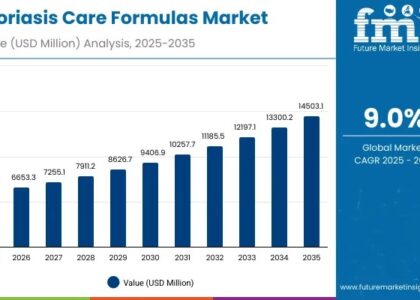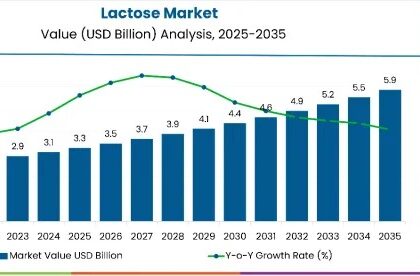The electronic batch records market is set to grow to USD 28 billion in 2025 and grow to USD 85 billion by 2035, at a CAGR of 12% through the forecast period.
The electronic batch records market is gaining significant traction as the pharmaceutical and biotechnology industries increasingly adopt digital technologies to streamline manufacturing processes. Electronic batch records, often referred to as EBR, are digital versions of paper-based records used to document the production and control of manufactured batches. These systems ensure regulatory compliance, enhance data accuracy, and reduce the risk of human errors. With increasing regulatory pressures and the need for real-time data access, companies are shifting towards digital solutions to optimize productivity and maintain competitive advantage. The electronic batch records market plays a crucial role in supporting this transformation by providing platforms that enable secure, efficient, and compliant batch record management.
Get Sample Report: – https://www.futuremarketinsights.com/reports/sample/rep-gb-2024
Size & Trends
The electronic batch records market has experienced steady growth over recent years, driven by advancements in cloud computing, data integration technologies, and regulatory compliance requirements. The trend towards automation in life sciences manufacturing has propelled the demand for solutions that improve operational efficiency and data integrity. Furthermore, the increased focus on data-driven decision-making and the proliferation of smart manufacturing technologies have amplified the importance of EBR systems. As digital transformation becomes a strategic priority, both established pharmaceutical companies and emerging biotech firms are investing heavily in EBR solutions. This ongoing shift suggests that the market is set to expand further, driven by continuous innovation and a rising number of pharmaceutical facilities adopting electronic systems.
Key Highlights
One of the major highlights of the electronic batch records market is the growing emphasis on regulatory compliance. Regulatory agencies such as the FDA and EMA have established stringent guidelines that demand accurate, real-time documentation of production activities. EBR systems not only simplify the process of compliance but also help organizations maintain high standards of product quality and traceability. Another noteworthy aspect is the integration of EBR with other digital manufacturing systems such as Manufacturing Execution Systems (MES), Enterprise Resource Planning (ERP), and Quality Management Systems (QMS). These integrations offer a more holistic view of operations and facilitate seamless communication between different departments, thereby enhancing overall efficiency. Furthermore, the shift from on-premise to cloud-based EBR solutions has allowed companies to reduce infrastructure costs and improve system scalability.
Challenges and Opportunities
While the electronic batch records market holds immense potential, it is not without its challenges. One of the primary obstacles is the high initial cost of implementation, which can be a deterrent for small and medium-sized enterprises. Additionally, the transition from traditional paper-based systems to digital platforms requires significant change management and staff training. Resistance to change and a lack of digital literacy among operators can slow down adoption rates. Despite these challenges, the market presents numerous opportunities for growth. For instance, the increasing demand for personalized medicine and biologics has created a need for more flexible and adaptive manufacturing processes. EBR systems, with their ability to provide real-time data and streamline documentation, are ideally suited to support these complex production environments. Moreover, the rising popularity of contract manufacturing organizations (CMOs) opens new avenues for EBR vendors to provide scalable and customizable solutions that cater to diverse client needs.
Key Benefits for Stakeholders
The electronic batch records market offers significant benefits to various stakeholders across the pharmaceutical manufacturing landscape. For manufacturers, EBR systems help in reducing documentation errors, improving batch release times, and ensuring compliance with global regulatory standards. Quality assurance teams benefit from improved visibility and traceability of production activities, enabling quicker identification and resolution of quality issues. Regulatory bodies appreciate the transparency and standardization that EBR systems bring, which in turn facilitates faster approvals and audits. Additionally, patients stand to gain indirectly through improved drug safety and quality, as manufacturers are better equipped to maintain stringent production controls. Overall, the adoption of EBR systems enhances operational efficiency, reduces costs, and strengthens stakeholder confidence in manufacturing processes.
Market Share by Geographical Region
Geographically, the electronic batch records market is witnessing diverse adoption patterns across various regions. North America holds a significant share, driven by the presence of major pharmaceutical companies and a strong regulatory framework that encourages digital transformation. The United States, in particular, has been at the forefront due to its advanced healthcare infrastructure and proactive regulatory environment. Europe is also a prominent market, with countries like Germany, the UK, and France adopting EBR solutions to meet stringent EU compliance standards. Meanwhile, the Asia-Pacific region is emerging as a high-growth area, fueled by the expansion of the pharmaceutical sector in countries such as China and India. The growing emphasis on quality control and regulatory alignment in these markets is contributing to the increased adoption of EBR systems. Latin America and the Middle East & Africa, although slower in adoption, are showing gradual progress as local industries modernize and seek greater efficiency.
Competitive Outlook
The electronic batch records market is characterized by intense competition among key players striving to expand their market presence and enhance product offerings. Companies are investing in research and development to create more robust, user-friendly, and integrated solutions that cater to the evolving needs of pharmaceutical manufacturers. Strategic collaborations, mergers, and acquisitions are common as firms aim to leverage complementary strengths and extend their global reach. Cloud-based deployment, AI-powered analytics, and mobile accessibility are some of the differentiating factors companies are focusing on to gain a competitive edge. In this dynamic landscape, innovation and adaptability are key to sustaining market leadership and capturing emerging opportunities.
Top Companies
Several prominent companies are leading the charge in the electronic batch records market. These include established names known for their technological expertise and commitment to compliance-driven solutions. Companies such as Emerson Electric Co., MasterControl Inc., Siemens AG, Abbott Informatics, and Sparta Systems have made significant contributions to the development of comprehensive EBR platforms. Other notable players include Oracle Corporation, Körber AG, Honeywell International Inc., and Abbott Laboratories, which offer integrated solutions tailored for the pharmaceutical and biotech sectors. These organizations continue to expand their capabilities by incorporating advanced technologies such as cloud computing, AI, and machine learning to improve system performance and user experience. Their ongoing investment in innovation and global expansion reflects the strategic importance of EBR systems in modern pharmaceutical manufacturing.
Explore In-Depth Analysis-Click Here to Access the Report:- https://www.futuremarketinsights.com/reports/electronic-batch-records-market
Segmentation Outlook
The electronic batch records market can be segmented based on various factors including deployment type, end-user, and industry vertical. In terms of deployment, the market is divided into cloud-based and on-premise solutions. Cloud-based systems are gaining popularity due to their cost-effectiveness, scalability, and ease of implementation. From an end-user perspective, pharmaceutical companies, biotechnology firms, and contract manufacturing organizations represent the primary users of EBR solutions. These entities rely on EBR systems to maintain quality standards and comply with regulatory mandates. Industry-wise, the market spans a range of applications, including clinical manufacturing, commercial production, and research laboratories. Each segment has unique requirements, which has led to the development of specialized solutions designed to cater to specific operational challenges. The ability of EBR systems to adapt to varied use cases underscores their relevance across different facets of the life sciences sector.
About Future Market Insights (FMI)
Future Market Insights, Inc. (ESOMAR certified, recipient of the Stevie Award, and a member of the Greater New York Chamber of Commerce) offers profound insights into the driving factors that are boosting demand in the market. FMI stands as the leading global provider of market intelligence, advisory services, consulting, and events for the Packaging, Food and Beverage, Consumer Technology, Healthcare, Industrial, and Chemicals markets. With a vast team of over 400 analysts worldwide, FMI provides global, regional, and local expertise on diverse domains and industry trends across more than 110 countries.
Contact Us:
Future Market Insights Inc.
Christiana Corporate, 200 Continental Drive,
Suite 401, Newark, Delaware – 19713, USA
T: +1-347-918-3531
For Sales Enquiries: sales@futuremarketinsights.com
Website: https://www.futuremarketinsights.com
LinkedIn| Twitter| Blogs | YouTube






